Transferencias monetarias multipropósito
Las TMM son transferencias de efectivo sin restricción que las personas afectadas por una crisis pueden utilizar para cubrir sus necesidades básicas. Por su naturaleza, las TMM son la modalidad de asistencia que ofrece a las personas un máximo grado de elección, flexibilidad y dignidad. También existen cada vez más evidencias de que son más costo-eficientes y costo-efectivas para satisfacer múltiples necesidades.
No obstante, las TMM requieren nuevas formas de colaboración entre los actores humanitarios, en todas las etapas del ciclo del programa, así como entre sectores. Si bien existen herramientas sólidas para fomentar la colaboración, éstas no han sido ampliamente adoptadas y las TMM todavía son utilizadas de manera ad hoc. Quedan desafíos por abordar si queremos integrar las TMM en el sistema humanitario con éxito.
Iniciativas relacionadas
Contenido destacado
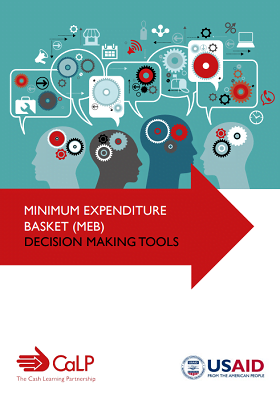
Minimum Expenditure Basket (MEB) Decision Making Tools
Guidelines and Tools
Update: This publication was revised in 2022. Please read the revised publication here.
The purpose of this tipsheet is to accompany practitioners and decision makers through key stages in the process of calculating an MEB to: (a)
identify what is the most appropriate path to take in relation to their
particular context, identified objective, existing capacities and available
resources; and...
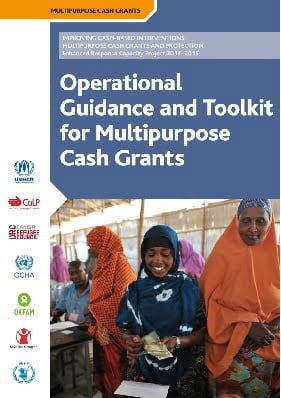
Operational Guidance and Toolkit for Multipurpose Cash Grants
Guidelines and Tools
This operational guidance and toolkit brings together worldwide expertise on cash-based interventions (CBIs). It provides comprehensive and practical guidance for humanitarian actors to assess the feasibility, conceptualise the design and structure the implementation of MPGs. The guidance focuses on MPGs whose primary objective is to meet basic needs as defined by affected people...

Definition of Minimum Expenditure Baskets (MEB) in West Africa
Report
Throughout 2017, five countries in West Africa have worked collectively to define minimum expenditure baskets, in order to better capture the contribution that humanitarian assistance is making to address the basic needs of affected populations, and improve the impact of assistance. This heavy process raises technical and coordination challenges. The CALP Network, with support from USAID /...
Últimos recursos
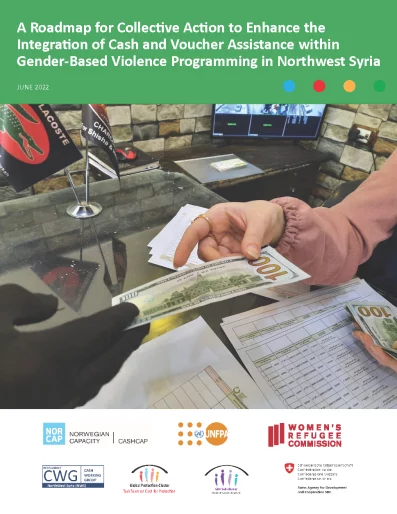
A roadmap for collective action to enhance the integration of cash and voucher assistance within gender-based violence programming in Northwest Syria
Case Study
This case study highlights the practical importance of coordination between CVA and GBV actors at all levels and shows how working in silos is detrimental to assisting to the fullest extent possible women and girls affected by GBV. It documents the conditions that led to the creation of a joint taskforce...

Geotargeting Analysis for Seasonal Assistance: Case study Chad
Case Study
This paper describes the methodology that was developed to address targeting gaps using remote sensing data, presents the results obtained using the methodology, and discusses the challenges in its utilisation.

MPCA Referral Mechanism to Sectoral Services in Iraq
Guidelines and Tools
This is a harmonised and inter-agency mechanism that allows referring MPCA beneficiaries to 5 critical sectors and its activities: Agriculture, Livelihoods, Health, Protection and Shelter. The aim is to provide more holistic support and enhance the impact of MPCA to vulnerable population.
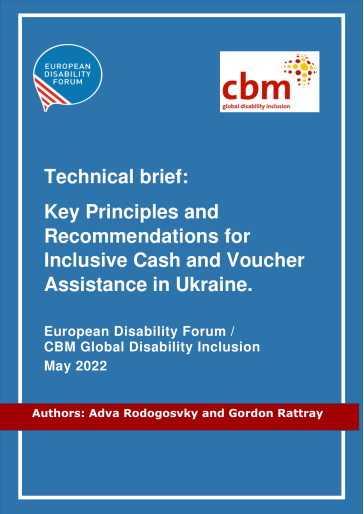
Technical brief: Key Principles and Recommendations for Inclusive Cash and Voucher Assistance in Ukraine.
Guidelines and Tools
A technical brief on inclusive cash and voucher assistance in Ukraine, developed together with the European Disability Forum. The brief is intended to provide general guidance for humanitarian agencies operating in Ukraine on how to implement Disability Inclusive CVA.

IOM Cash-based Interventions – Annual Report and Case Studies 2021
Case Study
The IOM CBI Annual Report and Case Studies 2021 highlights the increasing use of cash and voucher assistance in IOM and efforts to build capacity and knowledge on CBI within the organization. The report also features case studies from more than 30 IOM missions where CBI modalities were used to implement...
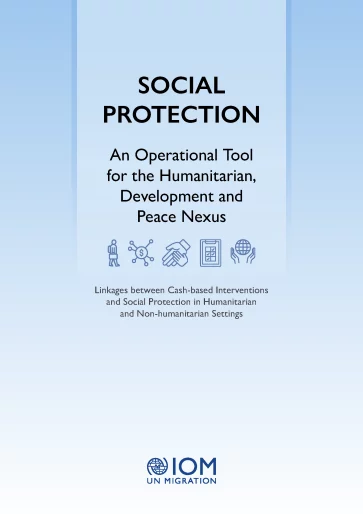
Social Protection: An operational tool for the humanitarian, development and peace nexus – Linkages between cash-based interventions and social protection in humanitarian and non-humanitarian settings
Policy paper
This paper explores linkages between Cash-Based Interventions (CBIs) and social protection in humanitarian and nonhumanitarian settings, focusing on linkages between humanitarian aid and sustainable social protection for migrants, including communities affected by forced displacement such as IDPs and...
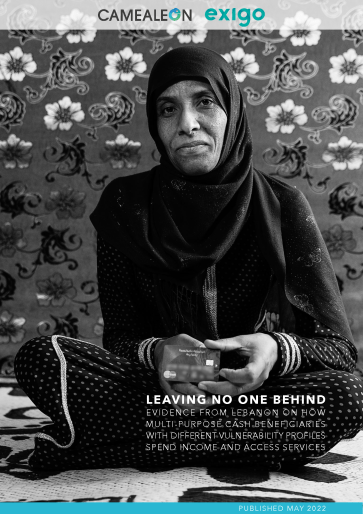
Leaving No One Behind: Evidence from Lebanon on How Multi-purpose Cash Beneficiaries with Different Vulnerability Profiles Spend Income and Access Services
Case Study
This study aims to generate a more in-depth and nuanced understanding of the impact of MPC assistance on Syrian refugee households with different vulnerability profiles, and explores how complementary interventions can support severely vulnerable households to meet their basic needs and address issues...
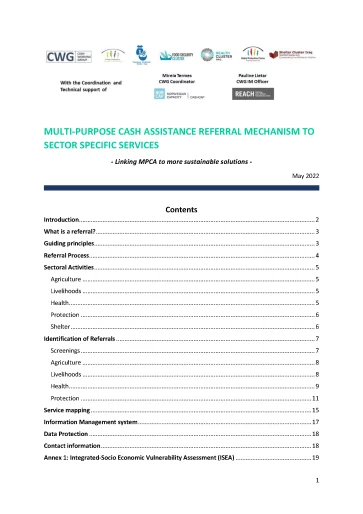
Multi-Purpose Cash Assistance Referral Mechanism to Sector Specific Services
Guidelines and Tools
Multi-Purpose Cash Assistance (MPCA) has been a major activity in Iraq since 2015, used mainly for responses for conflict affected populations. Results from Post-Distribution Monitoring (PDM) show high levels of satisfaction, supporting access to basic needs and expenditures on critical needs. However, a...

Resultados de las Transferencias Monetarias Multipropósito (TMM)- Indicadores y orientaciones
Guía y herramientas
Los indicadores en este documento, desarrollado por el Grupo de trabajo de programas de transferencias monetarias del “Gran Pacto” (Grand Bargain Cash Workstream), se centran en los objetivos primarios de las Transferencias Monetarias Multipropósito (TMM), y los resultados a los cuales las TMM...

Biweekly Factsheet on the Cash for Protection Taskforce (C4PTT) in Ukraine and Neighbouring Countries
Report
This Fact sheet collates key updates, findings and resources as drawn from Humanitarian Impact situation Reports; minutes from the Cash Working Group (CWG), Protection cluster and sub-cluster/AoR meetings; IOM; UNHCR and other UN sources. It is produced on a bi-weekly basis for protection and cash and...

Biweekly Factsheet on the Cash for Protection Taskforce (C4PTT) in Ukraine and Neighbouring Countries
Report
This Factsheet collates key updates, findings and resources as drawn from Humanitarian Impact situation reports; minutes from the Cash Working Group (CWG), Protection cluster and sub-cluster/AoR meetings; IOM; UNHCR and other UN sources. It is produced on a bi-weekly basis for protection and cash and...
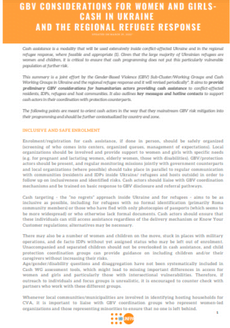
GBV Considerations for Women and Girls- Cash in Ukraine and the Regional Refugee Response- UNFPA 2022
Guidelines and Tools
Cash assistance is a modality that will be used extensively inside conflict-affected Ukraine and in the regional refugee response, where feasible and appropriate (1). Given that the large majority of Ukrainian refugees are women and children, it is critical to ensure that cash programming does not put...

Presentation: Launch of ECHO Cash thematic policy
Presentation
This is the presentation of the launch of ECHO’s Cash Thematic Policy, which provides guidance to DG ECHO partners and staff on the use of cash transfers. The launch event had the following objectives: Highlight key elements of the policy – emphasising what’s new. Equip a wide cash audience on how...

Webinar Recording: Launch of ECHO Cash Thematic Policy
Webinar recording
This is the recording of the launch of ECHO’s Cash Thematic Policy, which provides guidance to DG ECHO partners and staff on the use of cash transfers. The launch event had the following objectives: Highlight key elements of the policy – emphasising what’s new. Equip a wide cash audience on how to...

Guarantee 360-Degree Satisfaction in Cash Interventions
Report
The purpose of this learning paper is to inform the design of future protective and inclusive cash programming, particularly the MPCA. It highlights the results under the thematic areas of the study and gives recommendations in how to better address them through MPC in terms of appropriateness and...
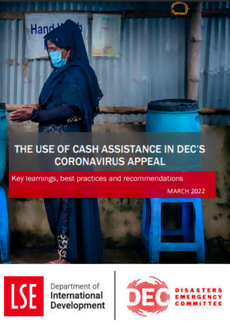
The Use of Cash Assistance in DEC’s Coronavirus Appeal: Key Learning, Best Practices and Recommendations
Report
The purpose of this report is to provide insight into the learnings, future improvements and best practices in cash programming. The 2020 DEC Coronavirus Appeal was analysed to determine the opportunities for collective learning about cash programming. The countries investigated include, Afghanistan,...

DG ECHO Thematic Policy Document on Cash Transfers
Policy paper
DG ECHO released its Thematic Policy document on Cash Transfers in March 2022. The document provides guidance primarily to DG ECHO’s partners and staff, but also to the wider cash community with the objective of collectively enhancing the quality and efficiency of cash programmes and of humanitarian...

Linking Multi-Purpose Cash Assistance to Long-Term Solutions: Key Findings and Recommendations from the Iraq CWG Workshop November 2021
Report
Large-scale Multi-Purpose Cash Assistance (MPCA) has been provided in Iraq since 2015 to assist people who are affected by conflict to meet their basic needs. Humanitarian actors view MPCA as the most appropriate response modality in Iraq and a major component of the Humanitarian Response Plan...
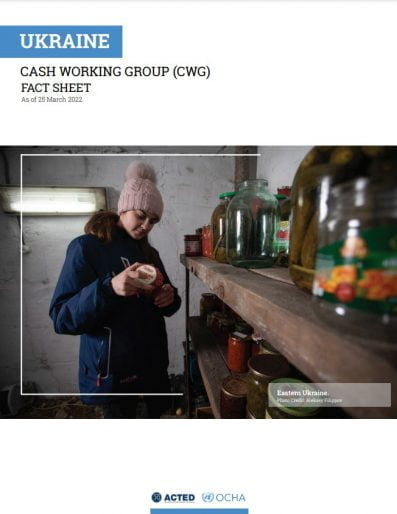
Ukraine Cash Working Group – Fact Sheet
Guidelines and Tools
The Ukraine Cash Working Group has produced this fact sheet to provide the latest information concerning: The cash working group, its foundations and current focus The role of multi purpose cash in light of the current crisis The Minimum Expenditure Basket (MPC) and its current calculation in...
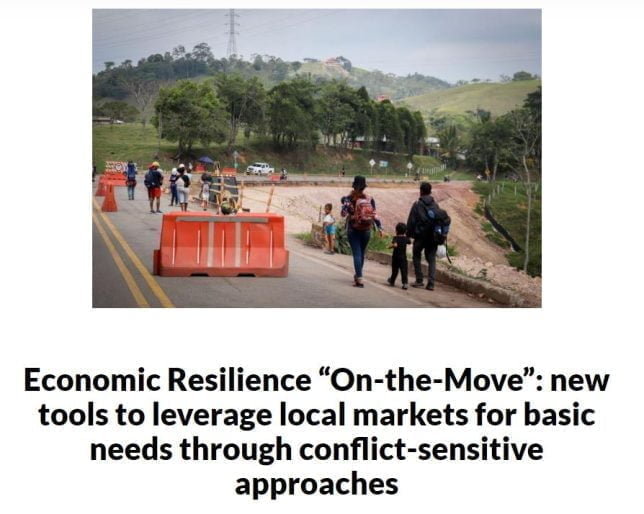
Economic Resilience “On-the-Move” – New Tools to leverage local markets for basic needs through conflict-sensitive approaches
Guidelines and Tools
See the publication here A special look at Cash and Local Markets for Social Cohesion Local market actors affected by (natural) disasters, pandemic lockdowns with movement restrictions and income loss – generally in Fragile Contexts – play a critical role in contributing towards communities’ basic...


